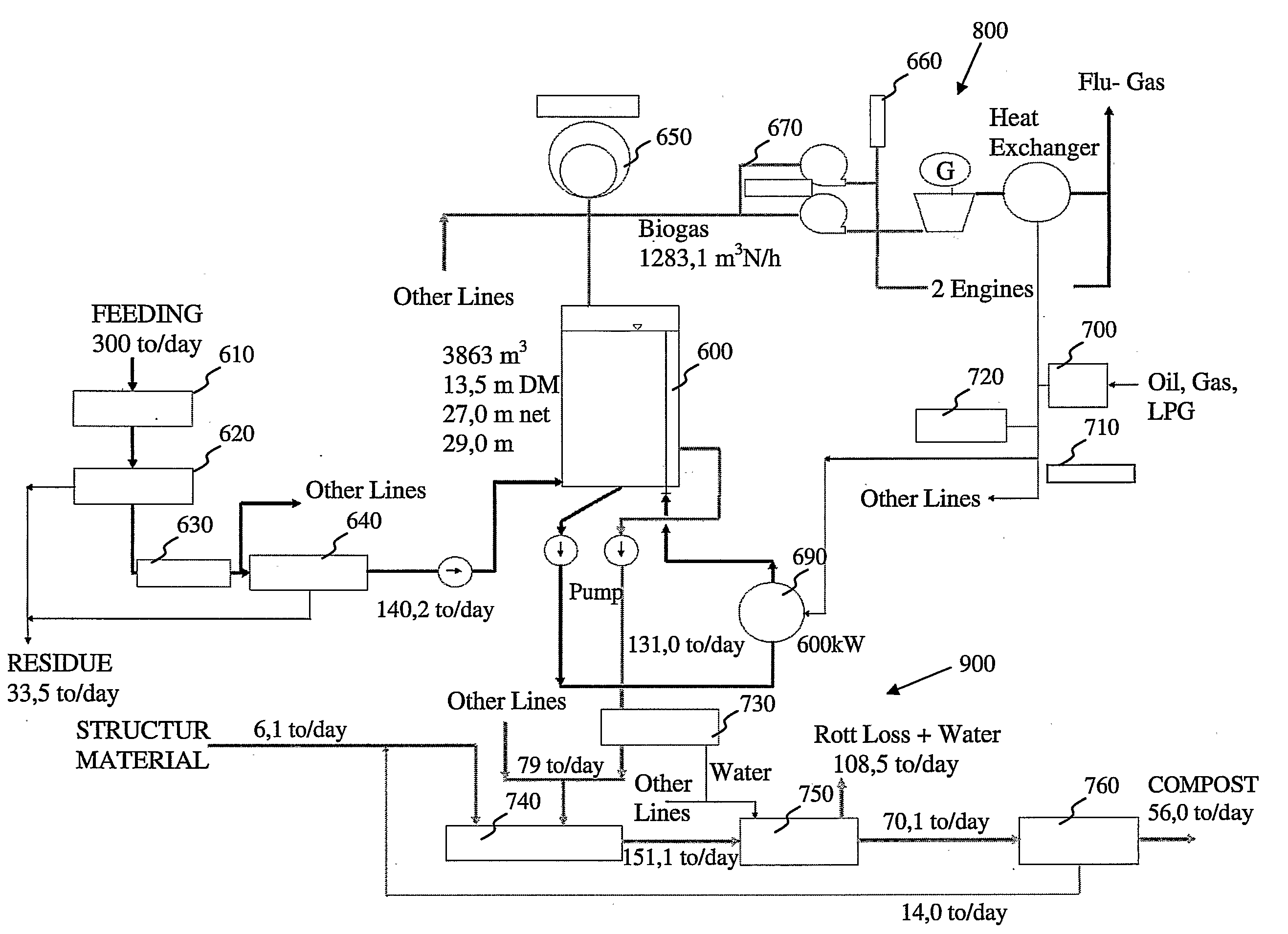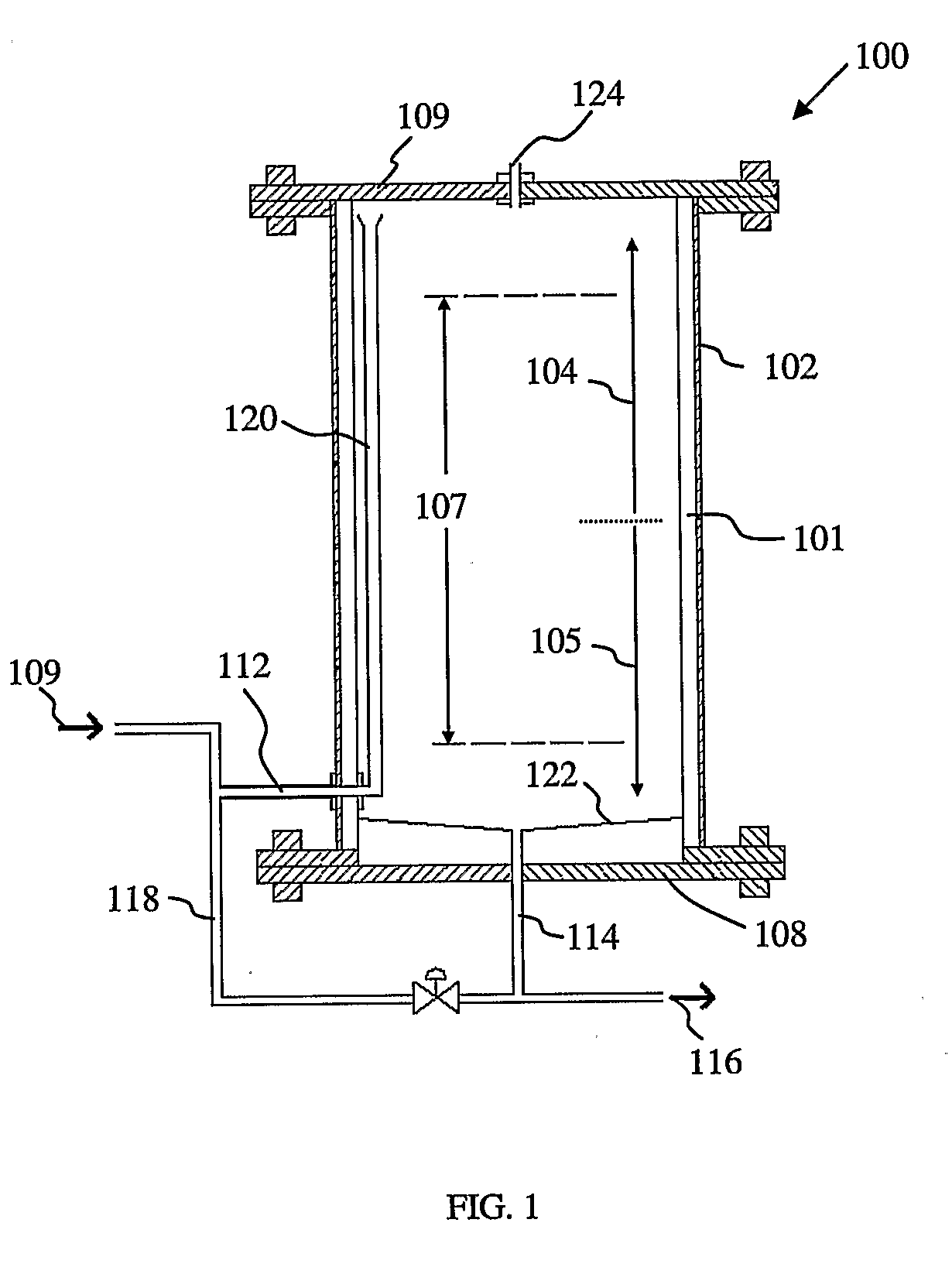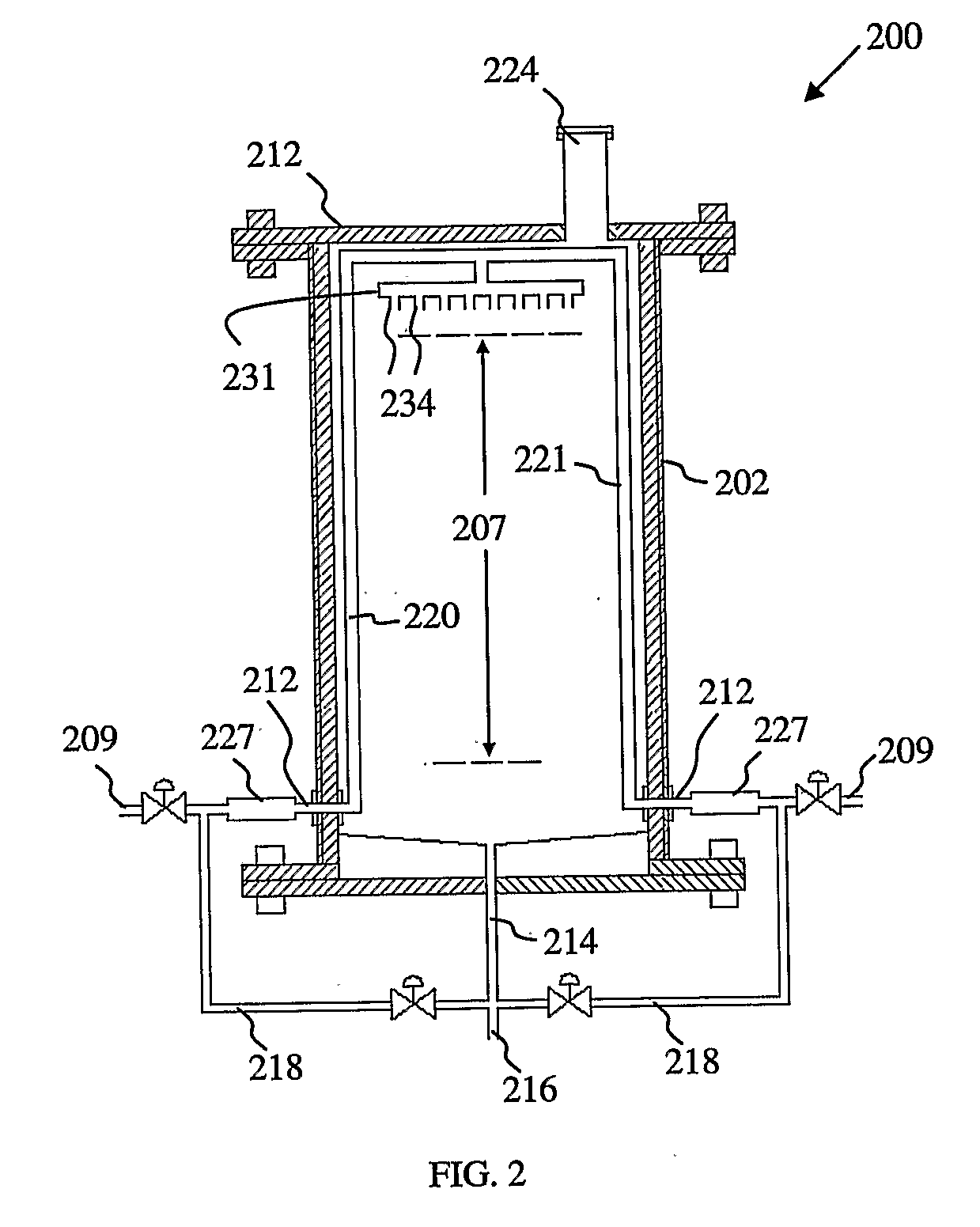High solid thermophilic anaerobic digester
a thermophilic anaerobic and digester technology, applied in biochemistry equipment, biochemistry apparatus and processes, water/sludge/sewage treatment, etc., can solve the problems of uneconomic use of scrubbed methane for heating raw sludge, economic unattractiveness of thermophilic digestion, etc., to reduce the size of sludge, and reduce the effect of sludge siz
- Summary
- Abstract
- Description
- Claims
- Application Information
AI Technical Summary
Benefits of technology
Problems solved by technology
Method used
Image
Examples
Embodiment Construction
[0052]FIG. 1 shows a first embodiment of the device according to the invention. In this embodiment, the device 100 comprises a digesting tank 102 having an upper region as denoted by the arrow 104 and a lower region denoted by the arrow 105. Arranged within the digesting tank 102 is a reaction chamber 107 where anaerobic digestion of sludge takes place. A raw sludge stream 109 is introduced into the digester via inlet 112 located at the lower region 105 and leaves the digesting tank via outlet 114. A portion of the matured sludge is discharged via discharge stream 116 while the remaining portion of the matured sludge is recycled via recycle stream 118. Recycle stream 118 is combined with raw sludge stream 109 at inlet 112, thereby mixing mature sludge with raw sludge (hereinafter known as mixed sludge). This provides the raw sludge with the necessary anaerobic bacteria required for it to be digested. Mixed sludge enters the digesting tank 102 via the inlet 112. The inlet 112 is conn...
PUM
| Property | Measurement | Unit |
|---|---|---|
| diameter | aaaaa | aaaaa |
| temperature | aaaaa | aaaaa |
| operating temperature | aaaaa | aaaaa |
Abstract
Description
Claims
Application Information
 Login to View More
Login to View More - R&D
- Intellectual Property
- Life Sciences
- Materials
- Tech Scout
- Unparalleled Data Quality
- Higher Quality Content
- 60% Fewer Hallucinations
Browse by: Latest US Patents, China's latest patents, Technical Efficacy Thesaurus, Application Domain, Technology Topic, Popular Technical Reports.
© 2025 PatSnap. All rights reserved.Legal|Privacy policy|Modern Slavery Act Transparency Statement|Sitemap|About US| Contact US: help@patsnap.com



